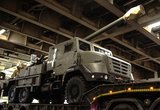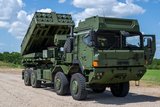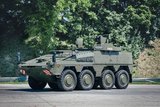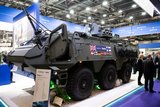Austrian Army to receive BvS10
Austria is set to become the latest country to operate the BvS10 military vehicle under a government-to-government arrangement with Sweden, it was announced on 30 June.
BAE Systems will supply 32 BvS10s in the armoured personnel carrier variant for the Austrian Army, with deliveries beginning in the second half of 2017 and concluding in 2019.
The BvS10 is a highly manoeuvrable armoured vehicle designed to deliver personnel or cargo in combat and disaster relief operations in challenging terrain.
With the contract Austria is joining France, the Netherlands, Sweden, and the UK as operators of the vehicle.
Tommy Gustafsson-Rask, managing director, BAE Systems Hägglunds, said: ‘This investment provides the Austrian Army with a very capable and robust vehicle, and enhances our global position as a leading supplier of military vehicles. Further, this contract is a result of a close and unique cooperation between the Swedish and Austrian governments and BAE Systems.’
The BvS10 will play a role in Austria’s mission in the European Union Mountain Training Warfare Initiative (EU MTI), with Austria to host schools, training and support services. The EU MTI was created to enhance military effectiveness in mountainous terrains, an environment where the BvS10 excels.
Related Equipment in Defence Insight
More from Land Warfare
-
![Lockheed Martin to look further afield for GMARS rocket system opportunities]()
Lockheed Martin to look further afield for GMARS rocket system opportunities
The HX truck is already in use in many NATO and allied countries around the world as a logistics vehicle and carrier for high-value systems, including missile firing weapons, so its use for the Global Mobile Artillery Rocket System makes logistical sense.
-
![Beyond Survivability: How Active Protection Systems Are Empowering Commanders (Podcast)]()
Beyond Survivability: How Active Protection Systems Are Empowering Commanders (Podcast)
As threats diversify and intensify, APS are proving essential not just for vehicle protection but also for enhancing operational freedom, effectiveness and mission success in contested environments.
-
Medium knocked out of British Army LMP, with CAVS as heavyweight champion
As the British Army seeks to modernise and consolidate its diverse vehicle fleet, yet another change in direction is underway.
























